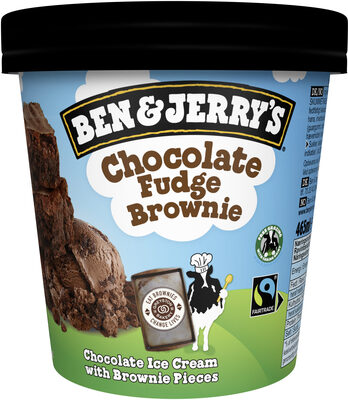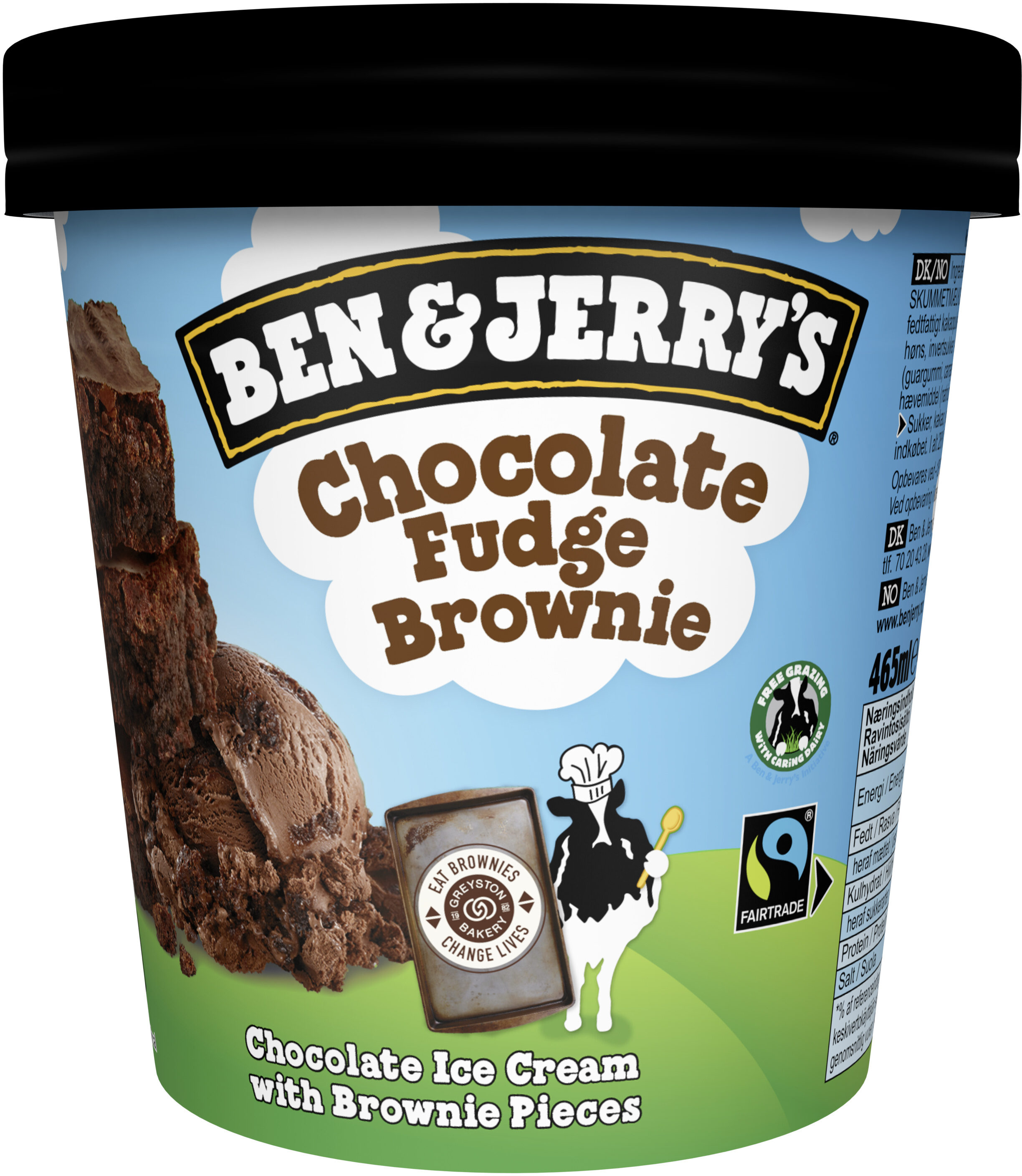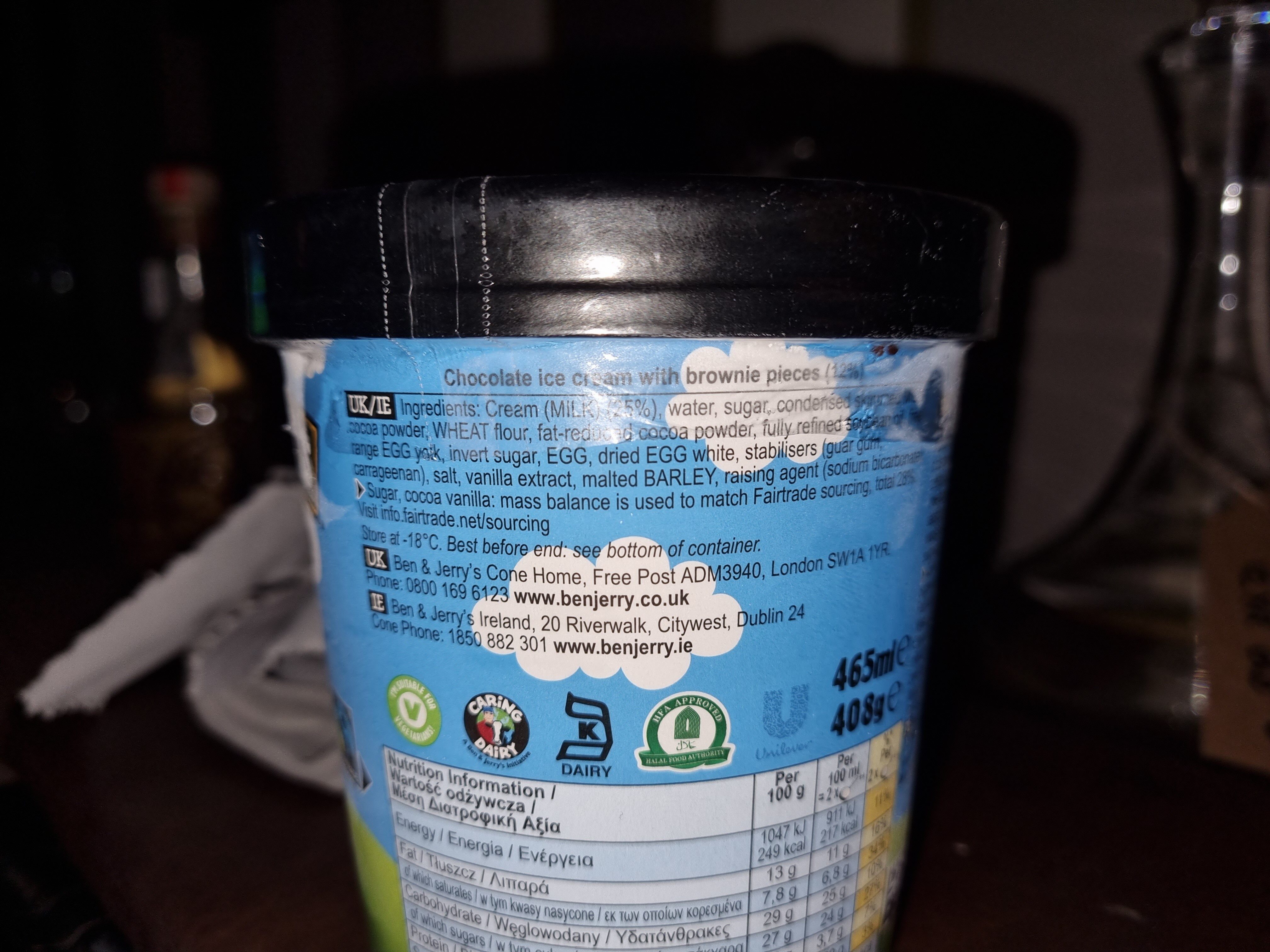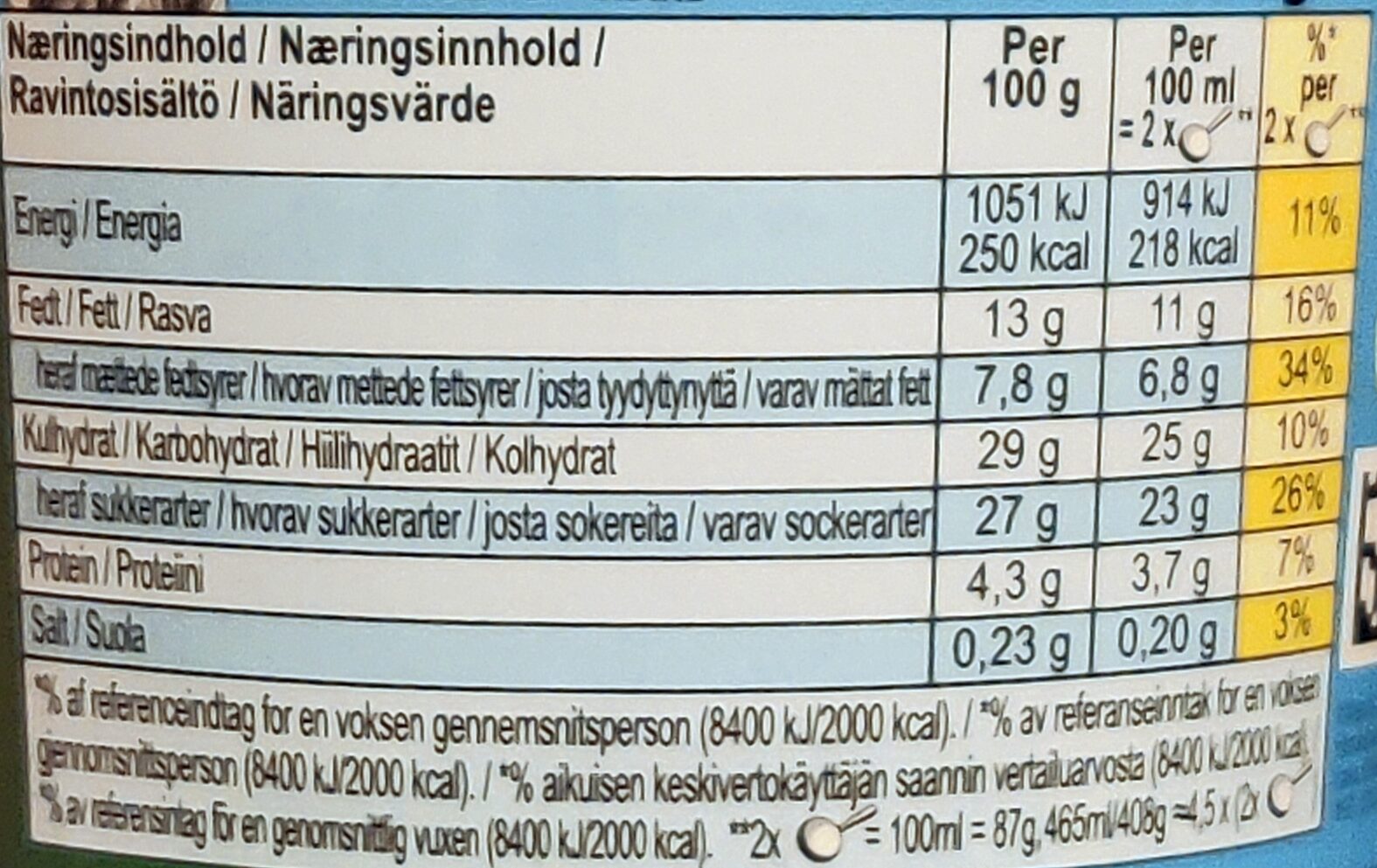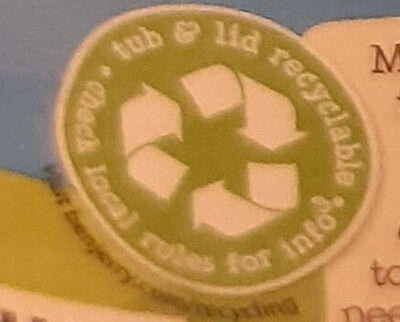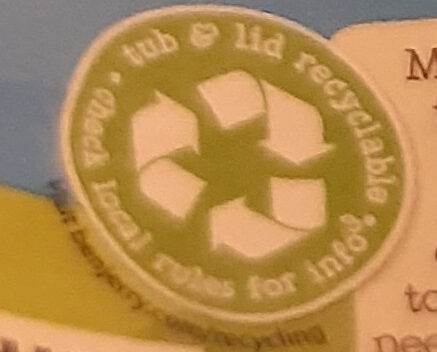Ben Jerrys Choc Fudge Brownie 465ml - Ben & Jerry's - 408 g
Some of the data for this product has been provided directly by the manufacturer Unilever France.
Barcode: 8711327370708 (EAN / EAN-13)
Common name: Schokoladen-Eiscreme mit Schokogebäckstücken (12%)
Quantity: 408 g
Packaging:
Card-lid, Card-tub, Couvercle carton, Film plastique, Green Dot, Pot carton
Brands: Ben & Jerry's
Categories: Desserts, Frozen foods, Frozen desserts, Ice creams and sorbets, Ice creams, Ice cream tubs, Chocolate ice cream tubs, Luxury ice cream in a cup, Congelados, Helado, Helados y sorbetes, Postres, Postres helados, Tarrinas y bloques de helado, Tarrinas y bloques de helado de chocolate
Labels, certifications, awards:
Fair trade, Fairtrade International, Halal, Kosher, Triman, de:Comercio justo, de:Point Vert, de:Punto Verde, de:Vegetariano


Origin of ingredients: el:free range eggs
Manufacturing or processing places: Netherlands
Stores: Coop, carrefour.fr
Countries where sold: Austria, France, Germany, Spain, Sweden, Switzerland
Matching with your preferences
Other information
Preparation: Pour une dégustation encore plus onctueuse de votre crème glacée, sortez-le quelques minutes avant de servir.
Conservation conditions: À conserver entre -25°C et -18°C
Customer service: Ben & Jerry's Relation Consommateurs, Unilever France, 20 rue des Deux Gares 92842 Rueil-Malmaison Cedex
Report a problem
Data sources
The manufacturer Unilever France uses Equadis to automatically transmit data and photos for its products.
Product added on by kiliweb
Last edit of product page on by org-unilever-france-gms.
Product page also edited by akitainu, annelotte, date-limite-app, driveoff, duhowpi, ecoscore-impact-estimator, ethic-advisor, ethic-advisor.49583a77-1928-4de0-9e1f-53d762f47c8c, foodless, foodvisor, halal-app-chakib, inf, machaterate, maxauro, mogli, openfoodfacts-contributors, packbot, prepperapp, professordoc, scanbot, smoothie-app, spotter, swipe-studio, thaialagata, torredibabele, vaporous, vikalex, yuka.YTQ0d0MvUUIvY0VZdDhVMTNnejUxTU10MW9DVUJEeXBKN0ZKSVE9PQ, yuka.sY2b0xO6T85zoF3NwEKvlmlXWMX0sivOBRbQnEqK3tyhEoThUfxx7rj5Cas, yuni6.
